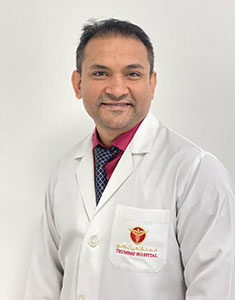
- The first, or top, number is called the systolic pressure. It is a measure of the pressure in your arteries as your heart beats.
- The second, or bottom number, is called the diastolic pressure. It is a measure of the pressure in your arteries as the heart relaxes.
Managing your hypertension is an important responsibility. Over time, hypertension can damage the arteries and decrease blood flow to important parts of the body, including the brain, heart, and kidneys. Having untreated or uncontrolled hypertension can lead to:
- A heart attack
- A stroke
- A weakened blood vessel (aneurysm)
- Heart failure
- Kidney damage
- Eye damage
- Metabolic syndrome
- Memory and concentration problems
- Vascular dementia

Hypertension can be managed by making lifestyle changes and possibly by taking medicines. Your health care provider will help you make a plan to bring your blood pressure within a normal range.
Nutrition
- Eat a diet that is high in fiber and potassium, and low in salt (sodium), added sugar, and fat. An example eating plan is called the Dietary Approaches to Stop Hypertension (DASH) diet. To eat this way:
- Eat plenty of fresh fruits and vegetables. Try to fill one-half of your plate at each meal with fruits and vegetables.
- Eat whole grains, such as whole-wheat pasta, brown rice, or whole-grain bread. Fill about one-fourth of your plate with whole grains.
- Eat low-fat dairy products.
- Avoid fatty cuts of meat, processed or cured meats, and poultry with skin. Fill about one-fourth of your plate with lean proteins such as fish, chicken without skin, beans, eggs, and tofu.
- Avoid pre-made and processed foods. These tend to be higher in sodium, added sugar, and fat.
- Reduce your daily sodium intake. Most people with hypertension should eat less than 1,500 mg of sodium a day.
Lifestyle
- Work with your health care provider to maintain a healthy body weight or to lose weight. Ask what an ideal weight is for you.
- Get at least 30 minutes of exercise that causes your heart to beat faster (aerobic exercise) most days of the week. Activities may include walking, swimming, or biking.
- Include exercise to strengthen your muscles (resistance exercise), such as weight lifting, as part of your weekly exercise routine. Try to do these types of exercises for 30 minutes at least 3 days a week.
- Do not use any products that contain nicotine or tobacco, such as cigarettes, e-cigarettes, and chewing tobacco. If you need help quitting, ask your health care provider.
- Control any long-term (chronic) conditions you have, such as high cholesterol or diabetes.
- Identify your sources of stress and find ways to manage stress. This may include meditation, deep breathing, or making time for fun activities.
Alcohol use
- Do not drink alcohol if:
- Your health care provider tells you not to drink.
- You are pregnant, may be pregnant, or are planning to become pregnant.
- If you drink alcohol:
- Limit how much you use to:
- 0–1 drink a day for women.
- 0–2 drinks a day for men.
- Be aware of how much alcohol is in your drink. In the U.S., one drink equals one 12 oz bottle of beer (355 mL), one 5 oz glass of wine (148 mL), or one 1½ oz glass of hard liquor (44 mL).
- Limit how much you use to:
Medicines
Your health care provider may prescribe medicine if lifestyle changes are not enough to get your blood pressure under control and if:
- Your systolic blood pressure is 130 or higher.
- Your diastolic blood pressure is 80 or higher.
Take medicines only as told by your health care provider. Follow the directions carefully. Blood pressure medicines must be taken as told by your health care provider. The medicine does not work as well when you skip doses. Skipping doses also puts you at risk for problems.
Monitoring
Before you monitor your blood pressure:
- Do not smoke, drink caffeinated beverages, or exercise within 30 minutes before taking a measurement.
- Use the bathroom and empty your bladder (urinate).
- Sit quietly for at least 5 minutes before taking measurements.
Monitor your blood pressure at home as told by your health care provider. To do this:
- Sit with your back straight and supported.
- Place your feet flat on the floor. Do not cross your legs.
- Support your arm on a flat surface, such as a table. Make sure your upper arm is at heart level.
- Each time you measure, take two or three readings one minute apart and record the results.
You may also need to have your blood pressure checked regularly by your health care provider.
General information
- Talk with your health care provider about your diet, exercise habits, and other lifestyle factors that may be contributing to hypertension.
- Review all the medicines you take with your health care provider because there may be side effects or interactions.
- Keep all visits as told by your health care provider. Your health care provider can help you create and adjust your plan for managing your high blood pressure.
Dr. Santosh Vijaynarayan Dwivedi
Specialist – Internal Medicine



